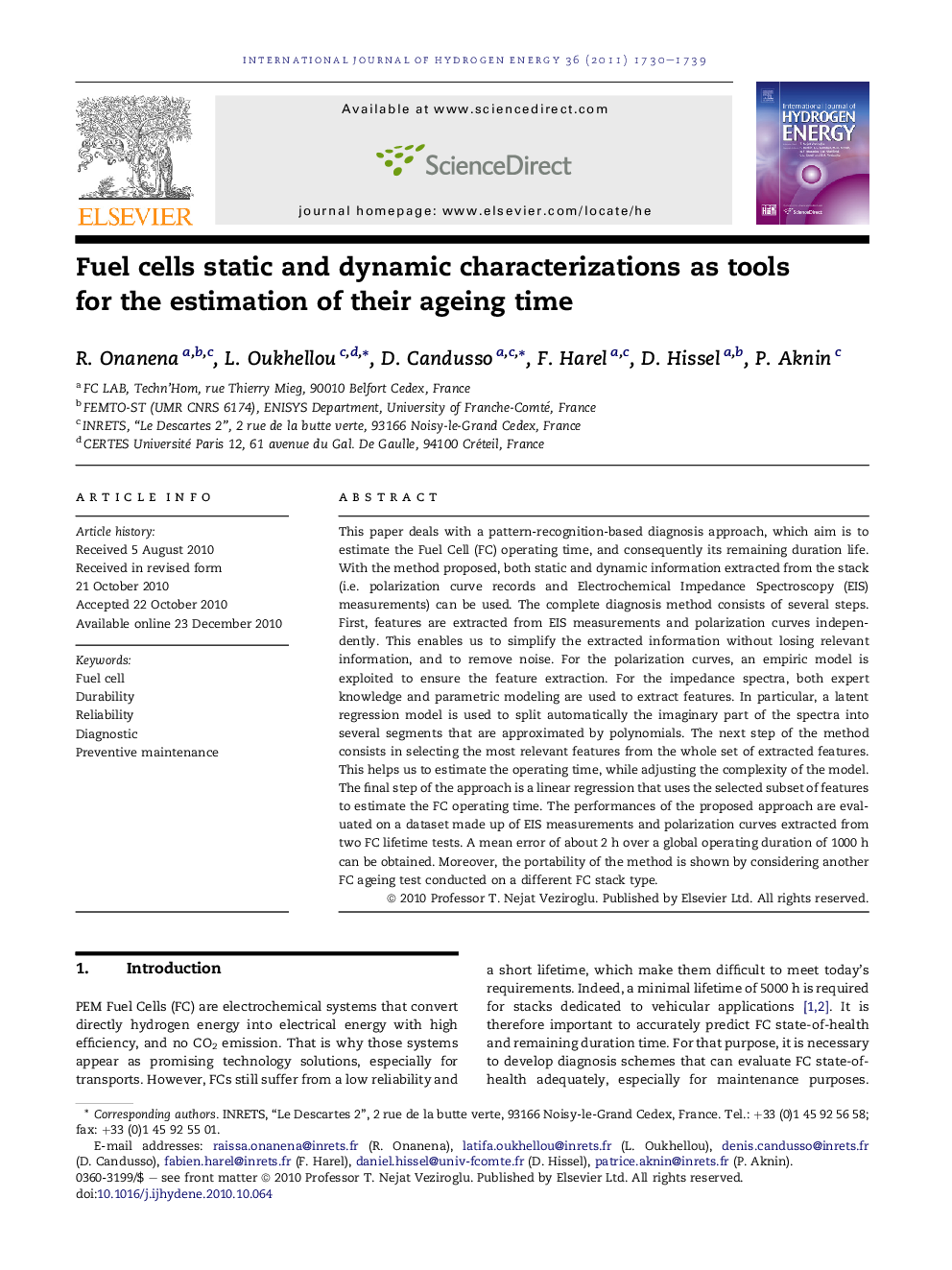| Article ID | Journal | Published Year | Pages | File Type |
|---|---|---|---|---|
| 1272340 | International Journal of Hydrogen Energy | 2011 | 10 Pages |
This paper deals with a pattern-recognition-based diagnosis approach, which aim is to estimate the Fuel Cell (FC) operating time, and consequently its remaining duration life. With the method proposed, both static and dynamic information extracted from the stack (i.e. polarization curve records and Electrochemical Impedance Spectroscopy (EIS) measurements) can be used. The complete diagnosis method consists of several steps. First, features are extracted from EIS measurements and polarization curves independently. This enables us to simplify the extracted information without losing relevant information, and to remove noise. For the polarization curves, an empiric model is exploited to ensure the feature extraction. For the impedance spectra, both expert knowledge and parametric modeling are used to extract features. In particular, a latent regression model is used to split automatically the imaginary part of the spectra into several segments that are approximated by polynomials. The next step of the method consists in selecting the most relevant features from the whole set of extracted features. This helps us to estimate the operating time, while adjusting the complexity of the model. The final step of the approach is a linear regression that uses the selected subset of features to estimate the FC operating time. The performances of the proposed approach are evaluated on a dataset made up of EIS measurements and polarization curves extracted from two FC lifetime tests. A mean error of about 2 h over a global operating duration of 1000 h can be obtained. Moreover, the portability of the method is shown by considering another FC ageing test conducted on a different FC stack type.
Research highlights► Estimation of fuel cell operating time and consequently remaining duration life. ► Evaluation with EIS measurements and polarization curves extracted from 2 stack lifetime tests. ► A mean error of about 2 h over a global operating duration of 1000 h. ► The portability of the method is examined.
